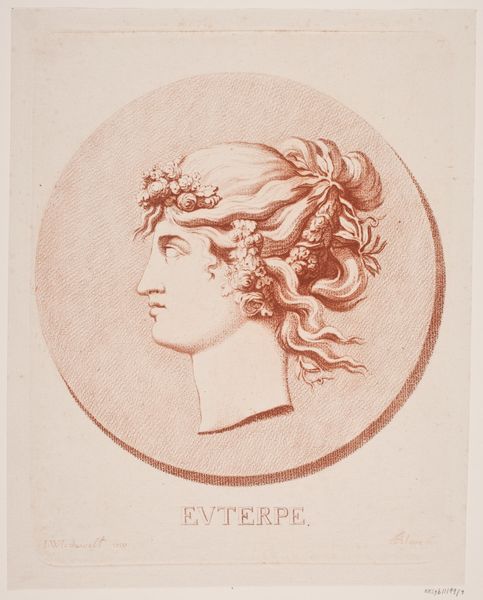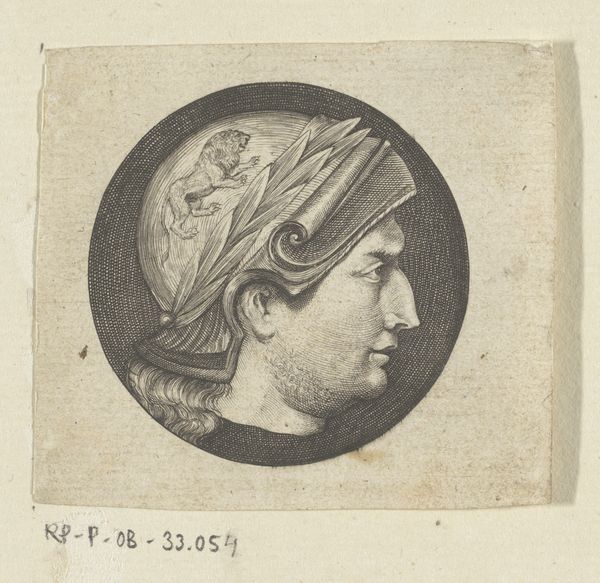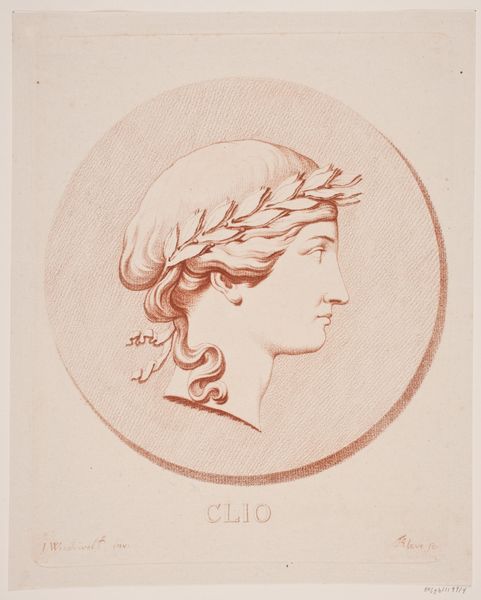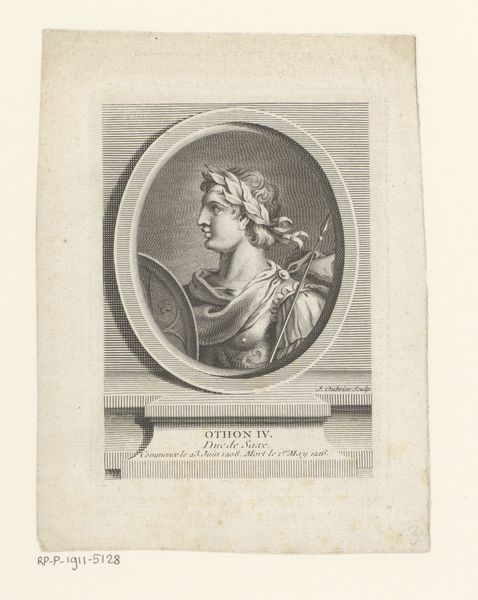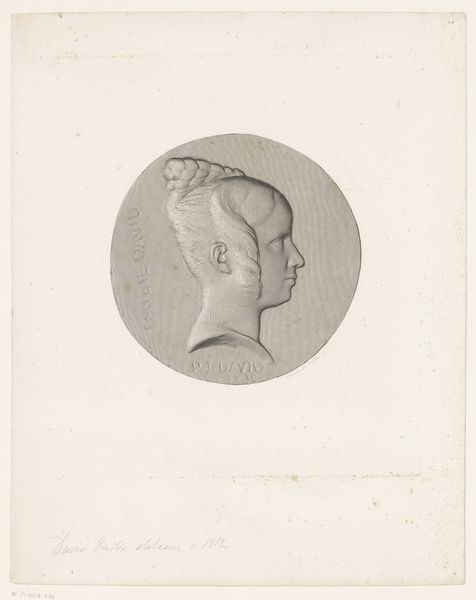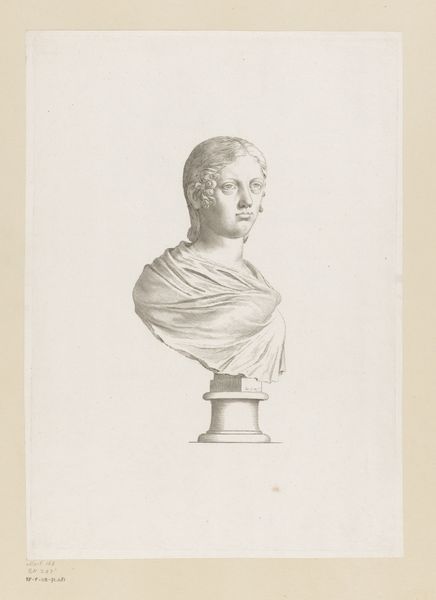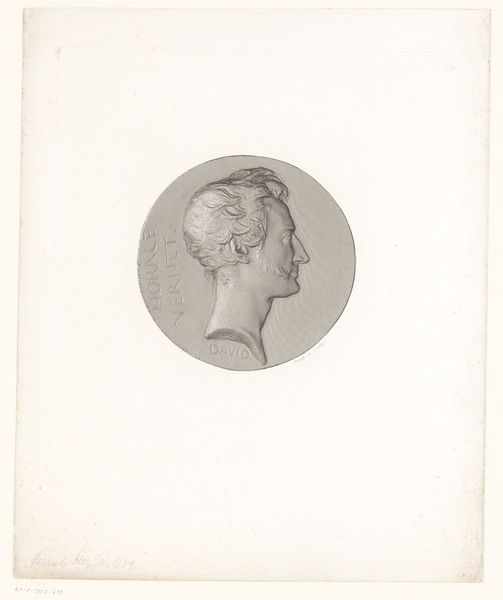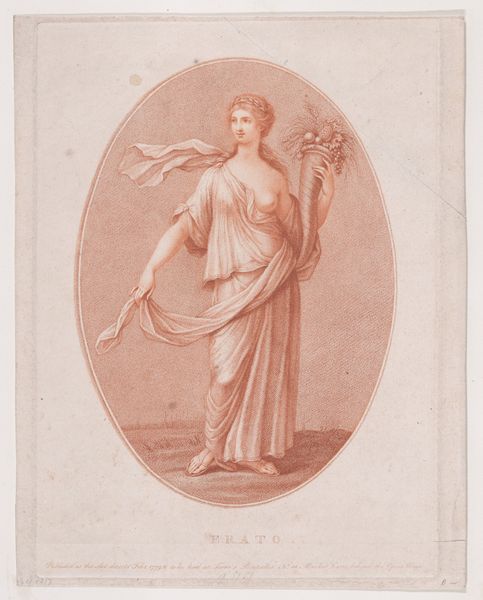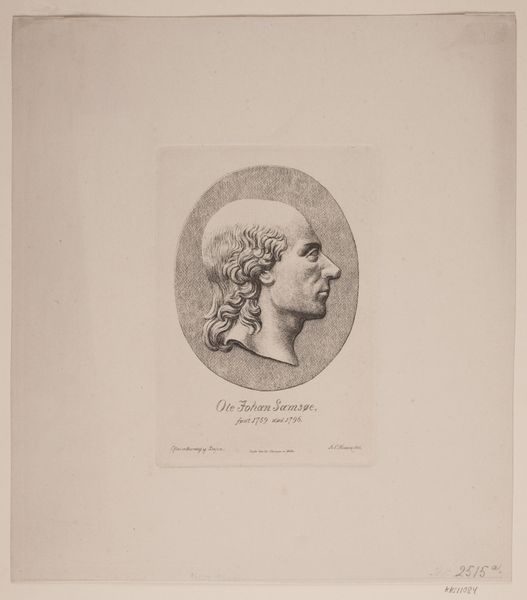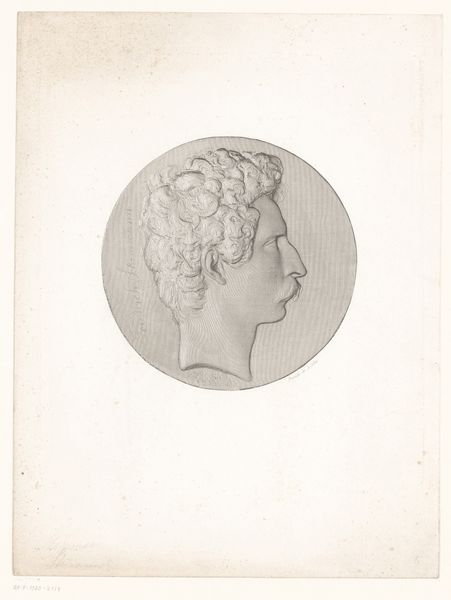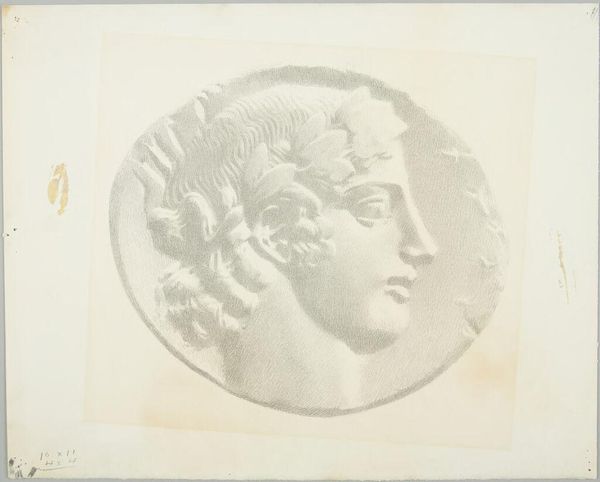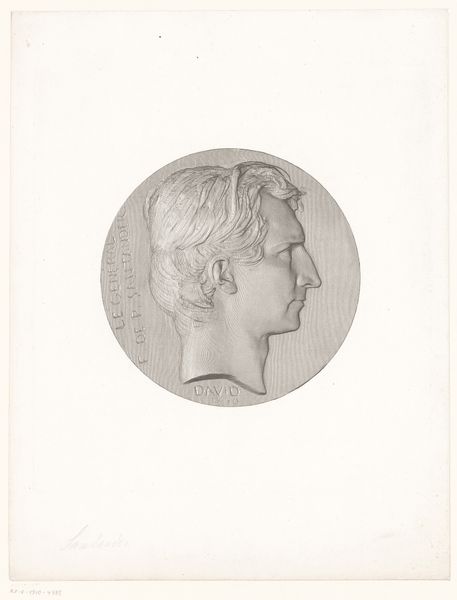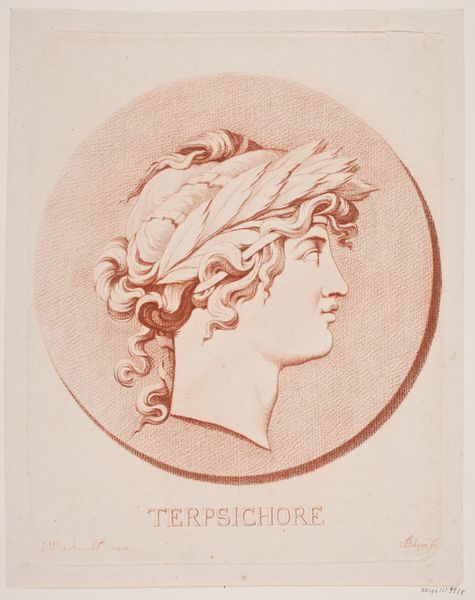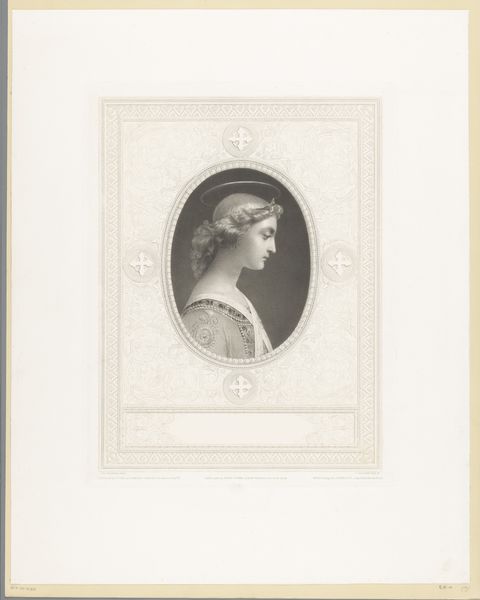
drawing, print
#
portrait
#
drawing
#
neoclacissism
# print
#
pencil sketch
#
pencil drawing
Dimensions: 278 mm (height) x 229 mm (width) (plademaal)
Terkel Kleve produced this print, titled Vrania, in Denmark, sometime in the late 18th century. Here we see a neoclassical-style portrait of a woman in profile, referencing the ancient Greek muse of astronomy. In the late 1700s, Europe was in the thrall of what we call Neoclassicism. Looking back to ancient Greece and Rome for inspiration, artists, intellectuals, and political leaders saw models for a new kind of social order based on rationality and democratic ideals. Kleve's Vrania neatly summarizes that political project through the visual language of antiquity. But the visual power of Kleve's classicizing image depends on a certain degree of historical distortion. Ancient Greek society was nothing like the enlightened paradise dreamed of by European revolutionaries. To really understand Kleve's print, we need to look at it alongside histories of colonialism and the invention of race, which provided the social conditions for the rise of Neoclassicism.
Comments
No comments
Be the first to comment and join the conversation on the ultimate creative platform.
